Are you curious about how long is the Mexican border with US? The Mexican border with the United States stretches approximately 1,954 miles (3,145 kilometers), presenting a vibrant intersection of cultures, landscapes, and communities, which is particularly fascinating for LGBTQ+ travelers and those interested in Mexican heritage. This extensive boundary offers diverse experiences, from bustling border towns to serene natural landscapes. For those looking to explore Mexico, gaymexico.net offers invaluable resources for planning inclusive and memorable trips, providing insights into LGBTQ+-friendly destinations, cultural events, and community connections.
Let’s explore the length of the border between Mexico and the US, offering a unique perspective tailored for LGBTQ+ individuals and those interested in Mexican culture. This comprehensive guide will highlight the significance of this border, its geographical diversity, and the cultural richness it embodies, as well as how gaymexico.net is your go-to source for LGBTQ+ travel insights and community connections in Mexico.
1. What is the Length of the Mexican Border with the US?
The Mexican border with the United States spans approximately 1,954 miles (3,145 kilometers). This extensive border traverses a variety of landscapes and regions, each offering unique cultural and environmental characteristics. The border is not just a geographical line; it’s a dynamic zone of interaction, blending cultures, economies, and ecosystems.
1.1 Key Features of the US-Mexico Border:
- Geographical Diversity: The border stretches from the Pacific Ocean to the Gulf of Mexico, encompassing deserts, rivers, and urban areas. This geographical diversity results in varied climates and ecosystems along the border.
- States Involved: The US states bordering Mexico are California, Arizona, New Mexico, and Texas. Each state has its distinct cultural and economic ties with Mexico, influencing the regional dynamics of the border.
- Border Cities: Numerous cities lie along the border, including Tijuana, Ciudad Juarez, and Matamoros on the Mexican side, and San Diego, El Paso, and Brownsville on the US side. These cities are hubs of commerce, tourism, and cultural exchange.
- Cultural Significance: The border region is a melting pot of cultures, with a strong blend of Mexican and American traditions. This cultural fusion is evident in the local cuisine, music, art, and festivals.
1.2 Why This Matters to the LGBTQ+ Community:
Understanding the length and diversity of the Mexican border is essential for LGBTQ+ travelers interested in exploring Mexico. It provides a context for appreciating the cultural richness and unique travel opportunities in the region.
- Diverse Travel Destinations: The border region offers a range of LGBTQ+-friendly destinations, each with its distinct charm and attractions.
- Cultural Immersion: The borderlands provide opportunities to immerse oneself in the vibrant culture that blends Mexican and American influences.
- Community Connections: For LGBTQ+ individuals of Mexican heritage, the border represents a link to their cultural roots and a chance to connect with the community.
The US-Mexico border area features diverse cities, each with unique attractions and cultural significance.
1.3 Finding More Information:
For detailed information about LGBTQ+-friendly destinations, cultural events, and community resources along the Mexican border, visit gaymexico.net. This website offers comprehensive guides and insights for LGBTQ+ travelers and those interested in Mexican culture.
2. What Are The Key Geographical Features Along the Mexican Border?
The US-Mexico border traverses a diverse range of geographical features, significantly impacting the climate, ecosystems, and human settlements along its path. Understanding these geographical features provides valuable context for appreciating the region’s natural beauty and ecological importance.
2.1 Major Geographical Elements:
- Deserts: Significant portions of the border run through the Sonoran and Chihuahuan Deserts. These arid landscapes are characterized by extreme temperatures, sparse vegetation, and unique desert wildlife.
- Rivers: The Rio Grande (known as Río Bravo in Mexico) forms a substantial part of the border, particularly between Texas and Mexico. The river is a vital water source and a defining geographical feature.
- Mountains: Mountain ranges such as the Sierra Madre Occidental in Mexico and various ranges in the US contribute to the rugged terrain along the border, influencing climate patterns and accessibility.
- Coastal Regions: The border begins at the Pacific Ocean in the west and extends to the Gulf of Mexico in the east. These coastal areas feature beaches, wetlands, and marine ecosystems.
2.2 Specific Geographical Highlights:
- Imperial Valley: This agricultural region in California is known for its fertile lands and intensive farming, contrasting with the surrounding desert environment.
- Big Bend National Park: Located in Texas, this park features dramatic river canyons, desert landscapes, and mountain ranges, offering opportunities for hiking, camping, and wildlife observation.
- Colorado River Delta: Although the Colorado River no longer consistently reaches the Gulf of California due to water diversion, the delta region remains an ecologically significant area with efforts to restore its wetlands.
- Gulf Coastal Plain: The eastern end of the border transitions into the Gulf Coastal Plain, characterized by flatlands, marshes, and coastal ecosystems.
2.3 Why This Matters to the LGBTQ+ Community:
The diverse geographical features along the Mexican border provide a backdrop for unique travel experiences and cultural appreciation, which is of interest to the LGBTQ+ community and those keen on exploring Mexico.
- Outdoor Adventures: The region offers opportunities for hiking, bird watching, and exploring diverse ecosystems.
- Scenic Beauty: The varied landscapes provide stunning vistas and photographic opportunities.
- Ecological Awareness: Understanding the environmental challenges and conservation efforts in the region can enhance the travel experience.
The Rio Grande River serves as a natural border, highlighting the region’s scenic beauty and ecological significance.
2.4 Finding More Information:
For more insights into the natural beauty and ecological significance of the Mexican border, as well as LGBTQ+-friendly travel tips, visit gaymexico.net. This website provides valuable resources for planning inclusive and memorable trips.
3. What Are the Main Border Cities Between the US and Mexico?
The US-Mexico border is dotted with numerous cities that serve as vital hubs for commerce, culture, and migration. These border cities are dynamic centers of activity, each with its unique character and significance.
3.1 Key Border Cities:
- Tijuana, Baja California, Mexico / San Diego, California, USA: Tijuana is one of Mexico’s largest cities and a major economic center. San Diego, on the US side, is known for its naval base, beaches, and cultural attractions.
- Ciudad Juarez, Chihuahua, Mexico / El Paso, Texas, USA: Ciudad Juarez is a significant industrial city in Mexico. El Paso is a major US city with a rich history and a strong Hispanic cultural influence.
- Mexicali, Baja California, Mexico / Calexico, California, USA: Mexicali is an important agricultural and manufacturing center in Mexico. Calexico is a smaller US city that relies heavily on cross-border commerce.
- Nogales, Sonora, Mexico / Nogales, Arizona, USA: Both Nogales cities are important ports of entry with a long history of trade and cultural exchange.
- Reynosa, Tamaulipas, Mexico / McAllen, Texas, USA: Reynosa is a growing industrial city in Mexico. McAllen is a major retail and medical hub in the US.
- Matamoros, Tamaulipas, Mexico / Brownsville, Texas, USA: Matamoros has a rich history and is an important manufacturing center. Brownsville is one of the oldest cities in South Texas, with a strong cultural heritage.
3.2 Significance of Border Cities:
- Economic Activity: Border cities are critical for international trade, with significant flows of goods and services.
- Cultural Exchange: These cities are melting pots of culture, blending Mexican and American traditions in unique ways.
- Migration and Immigration: Border cities are often the first point of contact for migrants and immigrants, playing a crucial role in managing cross-border movements.
3.3 Why This Matters to the LGBTQ+ Community:
Understanding the main border cities can enhance the travel experience for LGBTQ+ individuals interested in exploring Mexico. These cities offer a blend of cultural attractions, historical sites, and vibrant community life.
- Cultural Exploration: Border cities provide opportunities to experience the unique blend of Mexican and American cultures.
- Historical Insights: Many border cities have rich histories related to migration, trade, and cultural exchange.
- Community Connections: These cities are home to diverse communities, offering opportunities to connect with people from different backgrounds.
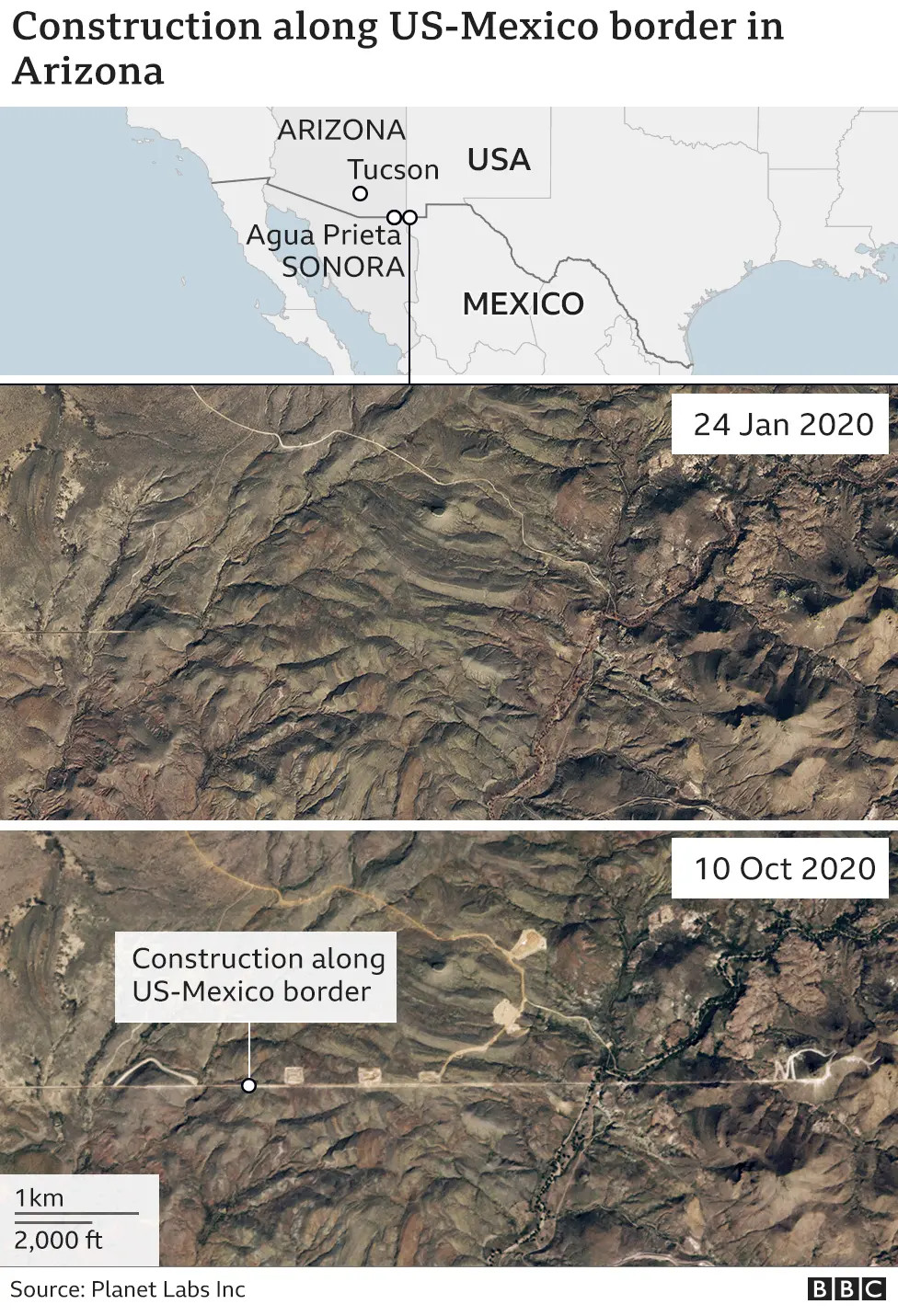 Border crossing between Tijuana and San Diego
Border crossing between Tijuana and San Diego
The border crossing between Tijuana and San Diego represents a significant point of cultural and economic exchange.
3.4 Finding More Information:
For more information about LGBTQ+-friendly destinations, cultural events, and community resources in the main border cities, visit gaymexico.net. This website offers comprehensive guides for LGBTQ+ travelers and those interested in Mexican culture.
4. What is the Impact of the US-Mexico Border on Culture and Society?
The US-Mexico border region is a vibrant and complex area where two cultures meet, blend, and sometimes clash. This interaction has a profound impact on the culture and society of both countries, creating a unique borderland identity.
4.1 Cultural Fusion:
- Language: “Spanglish,” a mix of Spanish and English, is commonly spoken in the border region, reflecting the linguistic blend.
- Cuisine: Border cuisine combines Mexican and American flavors, creating unique dishes and culinary traditions.
- Music and Art: The border region is a hub for artistic expression, with music and art reflecting the cultural fusion and social issues of the area.
4.2 Economic Impact:
- Trade: The border facilitates significant trade between the US and Mexico, supporting industries and jobs in both countries.
- Labor: Cross-border labor flows are common, with workers often commuting between the two countries for employment opportunities.
4.3 Social Issues:
- Migration: The border is a major point of entry for migrants seeking economic opportunities or asylum in the US.
- Security: Border security is a significant concern, with efforts to control illegal immigration, drug trafficking, and other criminal activities.
- Community Identity: The border region has a distinct cultural identity, shaped by the shared experiences and challenges of living in proximity to the international boundary.
4.4 Why This Matters to the LGBTQ+ Community:
Understanding the cultural and societal impact of the US-Mexico border can enrich the travel experience for LGBTQ+ individuals interested in exploring Mexico. It provides insights into the unique challenges and opportunities in the region.
- Cultural Sensitivity: Awareness of the cultural dynamics in the border region can promote respectful and meaningful interactions with local communities.
- Social Awareness: Understanding the social issues affecting the border region can foster empathy and engagement with community initiatives.
- Community Support: Supporting local businesses and organizations in the border region can contribute to the economic and social well-being of these communities.
Cultural performances along the border highlight the blending of Mexican and American traditions, celebrating the region’s rich heritage.
4.5 Finding More Information:
For more information about cultural events, community resources, and LGBTQ+-friendly destinations in the US-Mexico border region, visit gaymexico.net. This website offers valuable insights for planning inclusive and culturally enriching trips.
5. How Has Border Security Changed Over Time?
Border security along the US-Mexico border has evolved significantly over time, influenced by various factors, including migration patterns, economic policies, and national security concerns. Understanding these changes provides context for current border policies and their impact on communities.
5.1 Historical Overview:
- Early History: In the 19th and early 20th centuries, the border was relatively open, with limited restrictions on movement between the two countries.
- Mid-20th Century: Increased immigration and drug trafficking led to the implementation of stricter border controls, including the establishment of the US Border Patrol in 1924.
- Late 20th Century: The North American Free Trade Agreement (NAFTA) in 1994 led to increased cross-border trade and migration, prompting further 강화 of border security measures.
5.2 Recent Developments:
- Post-9/11 Security: Following the September 11 attacks, border security became a top priority, resulting in increased funding for border patrol, surveillance technology, and physical barriers.
- Construction of the Border Wall: The Trump administration’s focus on building a wall along the border led to significant construction efforts, sparking controversy and legal challenges.
- Current Policies: The Biden administration has shifted towards a more comprehensive approach to border management, emphasizing humane treatment of migrants and addressing the root causes of migration.
5.3 Impact on Communities:
- Increased Surveillance: Enhanced surveillance technologies have raised concerns about privacy and civil liberties in border communities.
- Economic Effects: Border security measures can impact cross-border trade and tourism, affecting local economies.
- Humanitarian Concerns: Stricter border controls have led to increased risks for migrants, including dangerous crossing conditions and family separations.
5.4 Why This Matters to the LGBTQ+ Community:
Understanding the evolution of border security can help LGBTQ+ individuals appreciate the complexities of the region and its impact on diverse communities.
- Advocacy: Knowledge of border policies can inform advocacy efforts to promote humane and equitable treatment of migrants and border communities.
- Awareness: Awareness of the challenges faced by migrants and border residents can foster empathy and support for community initiatives.
- Travel Planning: Understanding border crossing procedures and security measures can help LGBTQ+ travelers plan safe and informed trips to Mexico.
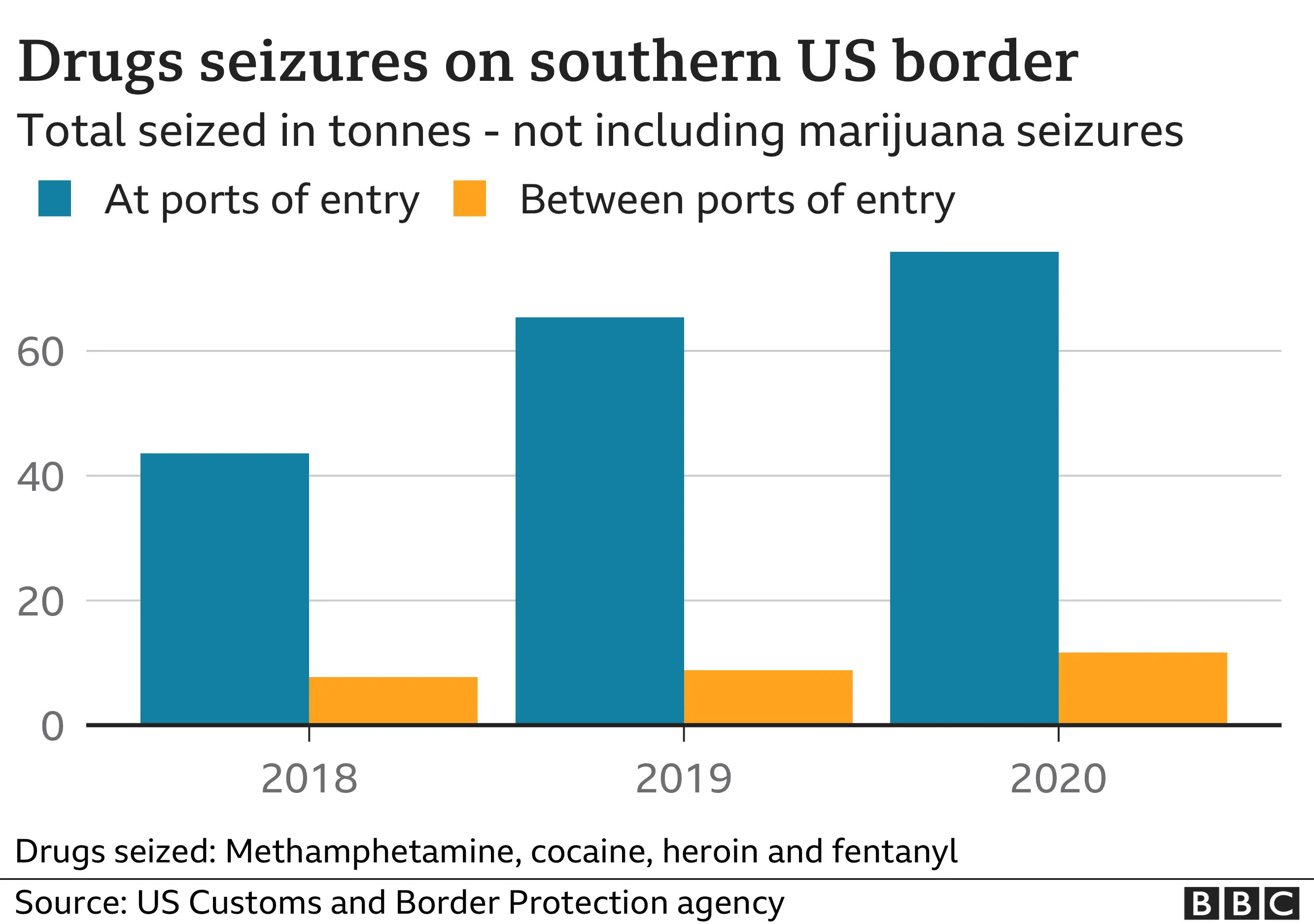 Border Patrol agents
Border Patrol agents
Border Patrol agents highlight the ongoing efforts to secure the US-Mexico border, influencing community dynamics and cross-border relations.
5.5 Finding More Information:
For detailed insights into border policies, community resources, and LGBTQ+-friendly travel tips, visit gaymexico.net. This website provides valuable information for planning inclusive and culturally enriching trips.
6. What are the Environmental Concerns Along the Border?
The US-Mexico border region faces significant environmental challenges due to its unique geography, climate, and the impacts of human activities. Addressing these concerns is crucial for the long-term sustainability and well-being of the region.
6.1 Key Environmental Issues:
- Water Scarcity: The arid and semi-arid climate of the border region, combined with increasing demand for water, has led to water scarcity and conflicts over water resources.
- Air Pollution: Industrial activities, vehicle emissions, and cross-border pollution contribute to air quality problems in border cities.
- Habitat Loss: Urban development, agriculture, and infrastructure projects have resulted in the loss of natural habitats and biodiversity along the border.
- Waste Management: Improper waste disposal and inadequate infrastructure for waste management have led to pollution of land and water resources.
6.2 Specific Environmental Challenges:
- Rio Grande Pollution: The Rio Grande is affected by pollution from industrial discharge, agricultural runoff, and untreated sewage, impacting water quality and aquatic ecosystems.
- Desertification: Overgrazing, deforestation, and climate change have contributed to desertification and land degradation in the border region.
- Endangered Species: Numerous plant and animal species in the border region are threatened or endangered due to habitat loss and other environmental stressors.
6.3 Conservation Efforts:
- Binational Cooperation: The US and Mexico have established cooperative agreements and initiatives to address environmental issues along the border.
- Protected Areas: National parks, wildlife refuges, and other protected areas help conserve biodiversity and natural resources in the border region.
- Community Initiatives: Local communities and organizations are working to promote sustainable practices, reduce pollution, and protect the environment.
6.4 Why This Matters to the LGBTQ+ Community:
Understanding the environmental concerns along the US-Mexico border can enhance the travel experience for LGBTQ+ individuals interested in exploring Mexico. It promotes responsible travel and support for sustainable practices.
- Eco-Tourism: Supporting eco-tourism initiatives can contribute to conservation efforts and promote sustainable development in the border region.
- Environmental Awareness: Awareness of environmental issues can foster responsible behavior and reduce the environmental impact of travel.
- Community Engagement: Engaging with local communities and organizations working on environmental issues can provide meaningful travel experiences.
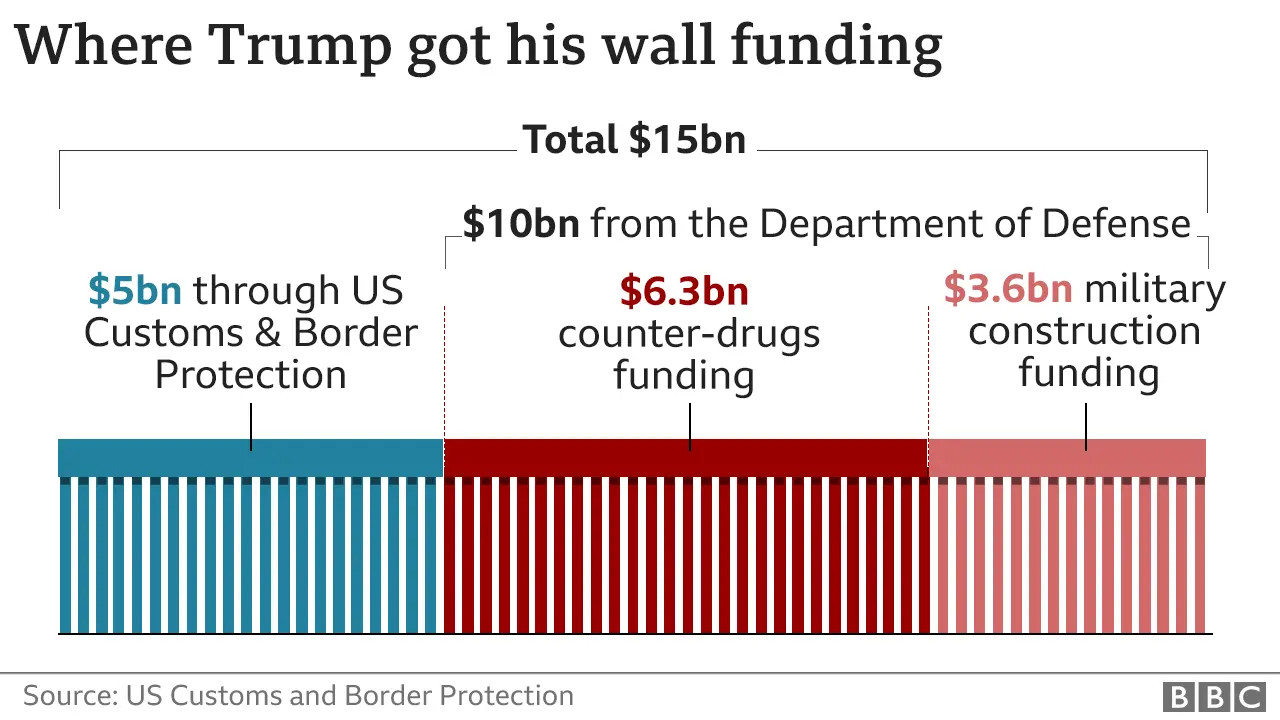 Environmental damage at the border
Environmental damage at the border
Environmental damage at the border underscores the need for sustainable practices and conservation efforts to protect the region’s natural resources.
6.5 Finding More Information:
For more information about environmental initiatives, sustainable travel tips, and LGBTQ+-friendly destinations in the US-Mexico border region, visit gaymexico.net. This website offers valuable insights for planning inclusive and responsible trips.
7. What Role Does the Border Play in US and Mexican Economies?
The US-Mexico border plays a crucial role in the economies of both countries, facilitating trade, investment, and labor flows that have significant impacts on regional and national levels. Understanding this economic interplay provides insights into the dynamics of the border region.
7.1 Key Economic Activities:
- Trade: The US and Mexico are major trading partners, with billions of dollars in goods and services crossing the border annually.
- Manufacturing: The border region is home to numerous manufacturing plants, known as maquiladoras, that produce goods for export to the US and other countries.
- Agriculture: The border region includes important agricultural areas that produce crops and livestock for both domestic consumption and export.
- Tourism: Tourism is a significant economic activity in the border region, attracting visitors from both countries and around the world.
7.2 Economic Impacts:
- Job Creation: Cross-border trade and investment support jobs in manufacturing, agriculture, tourism, and other sectors in both the US and Mexico.
- Economic Growth: The border region is a dynamic area of economic growth, driven by trade, investment, and innovation.
- Income Generation: Economic activities along the border generate income for businesses, workers, and communities in both countries.
7.3 Challenges and Opportunities:
- Economic Disparities: Despite the economic activity, there are significant economic disparities between the US and Mexican sides of the border.
- Infrastructure Needs: Adequate infrastructure, including transportation, communication, and utilities, is essential for supporting economic activity along the border.
- Regulatory Issues: Regulatory differences and trade barriers can hinder cross-border economic activity.
7.4 Why This Matters to the LGBTQ+ Community:
Understanding the economic dynamics of the US-Mexico border can enhance the travel experience for LGBTQ+ individuals interested in exploring Mexico. It promotes support for local businesses and sustainable economic development.
- Support Local Businesses: Patronizing local businesses and restaurants can contribute to the economic well-being of border communities.
- Ethical Consumption: Choosing products and services that are produced in a sustainable and ethical manner can support responsible economic practices.
- Community Development: Engaging with community development initiatives can promote economic empowerment and social equity in the border region.
Trucks crossing the border symbolize the extensive trade and economic interdependence between the US and Mexico, impacting the livelihoods of communities on both sides.
7.5 Finding More Information:
For more information about economic development, local businesses, and LGBTQ+-friendly destinations in the US-Mexico border region, visit gaymexico.net. This website offers valuable insights for planning inclusive and economically responsible trips.
8. What are the Legal and Policy Frameworks Governing the Border?
The US-Mexico border is governed by a complex array of legal and policy frameworks that address issues ranging from immigration and trade to security and environmental protection. Understanding these frameworks is essential for comprehending the dynamics of the border region.
8.1 Key Legal and Policy Areas:
- Immigration Law: Immigration laws and policies govern the entry, stay, and removal of individuals across the border, impacting migration patterns and border security.
- Trade Agreements: Trade agreements, such as the United States-Mexico-Canada Agreement (USMCA), regulate trade flows and economic relations between the two countries.
- Border Security Policies: Border security policies address issues such as illegal immigration, drug trafficking, and terrorism, influencing the deployment of resources and technologies along the border.
- Environmental Regulations: Environmental regulations aim to protect natural resources and address pollution issues in the border region, promoting sustainable development.
8.2 Key Agencies and Institutions:
- US Customs and Border Protection (CBP): CBP is responsible for enforcing immigration laws, securing the border, and facilitating trade.
- US Immigration and Customs Enforcement (ICE): ICE is responsible for enforcing immigration laws within the United States, including the apprehension and removal of undocumented immigrants.
- Mexican Customs: Mexican customs authorities are responsible for regulating trade and enforcing immigration laws on the Mexican side of the border.
- Binational Commissions: Various binational commissions and working groups facilitate cooperation and coordination between the US and Mexico on border issues.
8.3 Legal and Policy Debates:
- Immigration Reform: Debates over immigration reform focus on issues such as border security, pathways to citizenship, and the treatment of undocumented immigrants.
- Trade Policy: Trade policies, such as tariffs and trade agreements, can have significant impacts on cross-border trade and economic relations.
- Border Wall: The construction of a border wall has been a contentious issue, raising legal, environmental, and ethical concerns.
8.4 Why This Matters to the LGBTQ+ Community:
Understanding the legal and policy frameworks governing the US-Mexico border can help LGBTQ+ individuals advocate for humane and equitable treatment of migrants and border communities.
- Advocacy: Knowledge of immigration laws and policies can inform advocacy efforts to promote immigration reform and protect the rights of LGBTQ+ immigrants.
- Awareness: Awareness of border security policies can foster concern about the impact on civil liberties and community relations.
- Community Support: Supporting organizations that provide legal assistance and advocacy services to migrants and border communities can contribute to social justice.
Legal frameworks at the border influence immigration, trade, and security, shaping the lives of communities and individuals in the region.
8.5 Finding More Information:
For more information about legal resources, advocacy organizations, and LGBTQ+-friendly destinations in the US-Mexico border region, visit gaymexico.net. This website offers valuable insights for planning inclusive and socially responsible trips.
9. What is the Future of the US-Mexico Border Region?
The future of the US-Mexico border region is shaped by a variety of factors, including demographic trends, economic integration, technological innovation, and policy decisions. Understanding these trends is essential for envisioning the future of this dynamic region.
9.1 Key Trends and Projections:
- Demographic Growth: The border region is expected to continue to experience population growth, driven by both natural increase and migration.
- Economic Integration: Economic integration between the US and Mexico is likely to deepen, with increased trade, investment, and cross-border supply chains.
- Technological Innovation: Technological innovation is transforming border management, with the deployment of drones, sensors, and other technologies to enhance security and facilitate trade.
- Climate Change: Climate change is expected to exacerbate environmental challenges in the border region, including water scarcity, desertification, and extreme weather events.
9.2 Potential Scenarios:
- Increased Cooperation: Increased cooperation between the US and Mexico could lead to more effective border management, enhanced economic integration, and improved environmental protection.
- Continued Tensions: Continued tensions over immigration, trade, and security could lead to increased border enforcement, economic disruptions, and strained relations between the two countries.
- Sustainable Development: A focus on sustainable development could promote economic growth, environmental protection, and social equity in the border region.
9.3 Challenges and Opportunities:
- Infrastructure Investment: Investing in infrastructure, including transportation, communication, and utilities, is essential for supporting economic growth and improving quality of life in the border region.
- Workforce Development: Investing in education and training can help prepare workers for the jobs of the future and reduce economic disparities in the border region.
- Community Engagement: Engaging with local communities and stakeholders is essential for developing policies and programs that address the needs and priorities of the border region.
9.4 Why This Matters to the LGBTQ+ Community:
Understanding the future trends and challenges facing the US-Mexico border region can help LGBTQ+ individuals advocate for inclusive and equitable policies that benefit all members of the community.
- Advocacy: Knowledge of demographic trends and policy issues can inform advocacy efforts to promote LGBTQ+ rights and social justice in the border region.
- Community Support: Supporting organizations that provide services and resources to LGBTQ+ individuals and families in the border region can contribute to their well-being and empowerment.
- Sustainable Travel: Promoting sustainable travel practices can help protect the environment and support local communities in the border region.
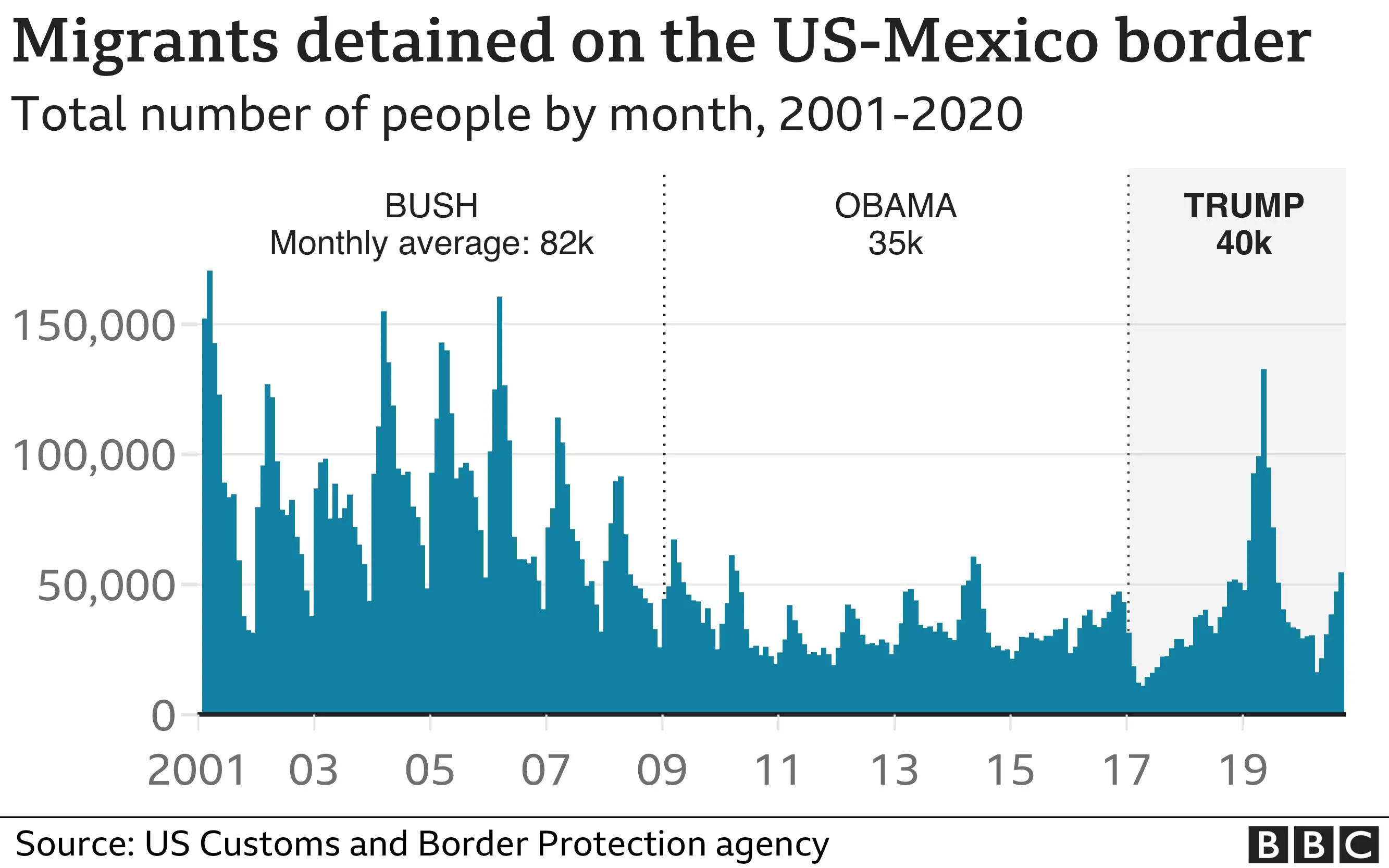 Future landscape of the border
Future landscape of the border
The future landscape of the border calls for innovative solutions and collaborative efforts to address economic, social, and environmental challenges, ensuring a sustainable and equitable future for all.
9.5 Finding More Information:
For more information about community initiatives, advocacy organizations, and LGBTQ+-friendly destinations in the US-Mexico border region, visit gaymexico.net. This website offers valuable insights for planning inclusive and forward-looking trips.
10. How Can You Experience the US-Mexico Border Region?
Experiencing the US-Mexico border region offers a unique opportunity to immerse yourself in the rich culture, history, and natural beauty of this dynamic area. Whether you’re interested in exploring urban centers, outdoor adventures, or cultural immersion, there’s something for everyone in the border region.
10.1 Travel Destinations:
- Tijuana and San Diego: These neighboring cities offer a blend of cultural attractions, culinary experiences, and historical sites.
- El Paso and Ciudad Juarez: Explore the rich history and vibrant culture of these border cities, with museums, historical landmarks, and local cuisine.
- Big Bend National Park: Discover the stunning desert landscapes, river canyons, and mountain ranges of this national park in Texas.
- Sonoran Desert: Explore the unique flora and fauna of the Sonoran Desert, with hiking trails, wildlife viewing, and scenic drives.
10.2 Cultural Activities:
- Attend Local Festivals: Experience the vibrant culture of the border region by attending local festivals, with music, dance, food, and art.
- Visit Museums and Historical Sites: Learn about the history and culture of the border region by visiting museums, historical sites, and cultural centers.
- Take a Cooking Class: Immerse yourself in the local cuisine by taking a cooking class and learning how to prepare traditional dishes.
- Explore Local Art Galleries: Discover the artistic talent of the border region by visiting local art galleries and studios.
10.3 Travel Tips:
- Plan Ahead: Research your travel destination and make reservations for accommodations, tours, and activities.
- Be Respectful: Respect local customs and traditions, and be mindful of cultural differences.
- Stay Safe: Take precautions to ensure your safety, including being aware of your surroundings, avoiding risky situations, and following local laws and regulations.
- Learn Some Spanish: Learning some basic Spanish phrases can enhance your travel experience and facilitate communication with locals.
10.4 Why This Matters to the LGBTQ+ Community:
Experiencing the US-Mexico border region can provide LGBTQ+ individuals with opportunities for cultural immersion, community engagement, and responsible travel.
- LGBTQ+-Friendly Destinations: Discover LGBTQ+-friendly destinations in the border region, with welcoming accommodations, bars, and community centers.
- Cultural Exchange: Engage with local communities and learn about the unique experiences and perspectives of LGBTQ+ individuals in the border region.
- Sustainable Travel: Support sustainable travel practices that protect the environment and benefit local communities.
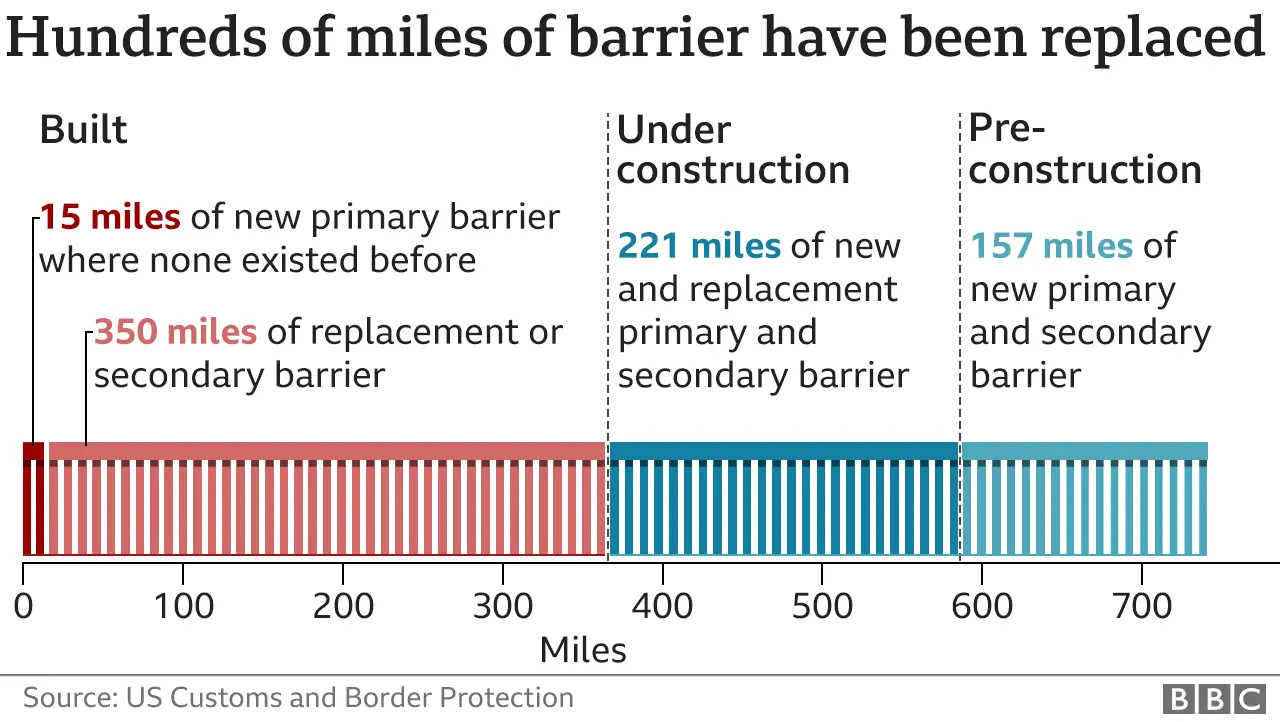 Experiencing local culture at the border
Experiencing local culture at the border
Experiencing local culture at the border allows for a deeper understanding of the region’s vibrant communities and unique blend of traditions.
10.5 Finding More Information:
For more information about LGBTQ+-friendly destinations, cultural events, and travel tips for the US-Mexico border region, visit gaymexico.net. This website offers valuable insights for planning inclusive and memorable trips.
The US-Mexico border, stretching approximately 1,954 miles, represents a dynamic intersection of cultures, landscapes, and communities. For LGBTQ+ travelers and those interested in Mexican heritage, understanding this border’s geographical diversity and cultural richness is key to planning inclusive and memorable trips. Gaymexico.net serves as your go-to resource, providing invaluable insights into LGBTQ+-friendly destinations, cultural events, and community connections. Explore the border’s vibrant cities, immerse yourself in its unique blend of traditions, and advocate for sustainable practices that protect this culturally significant region. Whether you’re seeking outdoor adventures, cultural immersion, or community engagement, gaymexico.net offers the guidance you need to experience the US-Mexico border in a meaningful and responsible way, highlighting the cultural crossroads.
Ready to start your adventure? Visit gaymexico.net today for comprehensive travel guides, event listings, and resources to connect with the LGBTQ+ community in Mexico. Plan your trip with confidence and discover the beauty and diversity that Mexico has to offer, with insights into safe travel.
Contact us for more information:
- Address: 3255 Wilshire Blvd, Los Angeles, CA 90010, United States
- Phone: +1 (213) 380-2177
- Website: gaymexico.net
Frequently Asked Questions (FAQs)
1. How long is the US-Mexico border?
The US-Mexico border is approximately 1,954 miles (3,145 kilometers) long, stretching from the Pacific Ocean to the Gulf of Mexico.
2. Which US states border Mexico?
The US states that border Mexico are California, Arizona, New Mexico, and Texas.
3. What are some major cities along the US-Mexico border?
Major cities along the border include Tijuana, Ciudad Juarez, and Matamoros on the Mexican side, and San Diego, El Paso, and Brownsville on the US side.
4. What is the cultural impact of the US-Mexico border?
The US-Mexico border region is a melting pot of cultures, with a strong blend of Mexican and American traditions evident in the local cuisine, music, art, and language.
5. How has border security changed over time?
Border security has evolved significantly, from relatively open borders in the early 20th century to increased enforcement and the construction of physical barriers in recent years.
6. What are the main environmental concerns along the US-Mexico border?
Environmental concerns include water scarcity, air pollution, habitat loss, and waste management issues affecting both the US and Mexico.
7. What role does the border play in the US and Mexican economies?
The border facilitates significant trade, manufacturing, agriculture, and tourism, contributing to job creation and economic growth in both countries.
8. What legal frameworks govern the US-Mexico border?
The border is governed by immigration laws, trade agreements, border security policies, and environmental regulations that impact cross-border activities.
9. What are some key trends shaping the future of the US-Mexico border region?
Key trends include demographic growth, economic integration, technological innovation, and the impacts of climate change on the environment.
10. How can LGBTQ+ individuals experience the US-Mexico border region?
LGBTQ+ individuals can explore LGBTQ+-friendly destinations, attend cultural events, support local businesses, and engage with community initiatives in the border region.
